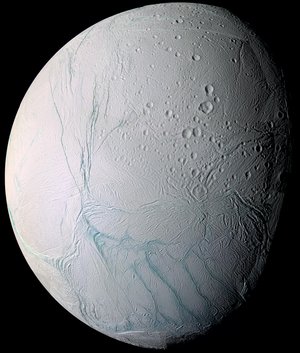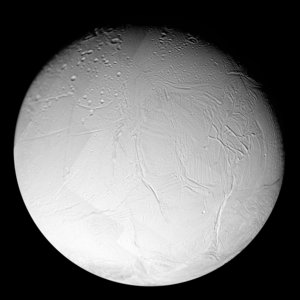Accept all cookies Accept only essential cookies See our Cookie Notice

About ESA
The European Space Agency (ESA) is Europe’s gateway to space. Its mission is to shape the development of Europe’s space capability and ensure that investment in space continues to deliver benefits to the citizens of Europe and the world.
Highlights
ESA - United space in Europe
This is ESA ESA facts Member States & Cooperating States Funding Director General Top management For Member State Delegations European vision European Space Policy ESA & EU Space Councils Responsibility & Sustainability Annual Report Calendar of meetings Corporate newsEstablishments & sites
ESA Headquarters ESA ESTEC ESA ESOC ESA ESRIN ESA EAC ESA ESAC Europe's Spaceport ESA ESEC ESA ECSAT Brussels Office Washington OfficeWorking with ESA
Business with ESA ESA Commercialisation Gateway Law at ESA Careers Cyber resilience at ESA IT at ESA Newsroom Partnerships Merchandising Licence Education Open Space Innovation Platform Integrity and Reporting Administrative Tribunal Health and SafetyMore about ESA
History ESA Historical Archives Exhibitions Publications Art & Culture ESA Merchandise Kids Diversity ESA Brand Centre ESA ChampionsLatest
Space in Member States
Find out more about space activities in our 23 Member States, and understand how ESA works together with their national agencies, institutions and organisations.
Science & Exploration
Exploring our Solar System and unlocking the secrets of the Universe
Go to topicAstronauts
Missions
Juice Euclid Webb Solar Orbiter BepiColombo Gaia ExoMars Cheops Exoplanet missions More missionsActivities
International Space Station Orion service module Gateway Concordia Caves & Pangaea BenefitsLatest
Space Safety
Protecting life and infrastructure on Earth and in orbit
Go to topicAsteroids
Asteroids and Planetary Defence Asteroid danger explained Flyeye telescope: asteroid detection Hera mission: asteroid deflection Near-Earth Object Coordination CentreSpace junk
About space debris Space debris by the numbers Space Environment Report In space refuelling, refurbishing and removingSafety from space
Clean Space ecodesign Zero Debris Technologies Space for Earth Supporting Sustainable DevelopmentLatest
Applications
Using space to benefit citizens and meet future challenges on Earth
Go to topicObserving the Earth
Observing the Earth Future EO Copernicus Meteorology Space for our climate Satellite missionsCommercialisation
ESA Commercialisation Gateway Open Space Innovation Platform Business Incubation ESA Space SolutionsLatest
Enabling & Support
Making space accessible and developing the technologies for the future
Go to topicBuilding missions
Space Engineering and Technology Test centre Laboratories Concurrent Design Facility Preparing for the future Shaping the Future Discovery and Preparation Advanced Concepts TeamSpace transportation
Space Transportation Ariane Vega Space Rider Future space transportation Boost! Europe's Spaceport Launches from Europe's Spaceport from 2012Latest

Zooming in on Enceladus
As it swooped past the south pole of Saturn's moon Enceladus on 14 July 2005, the NASA/ESA/ASI Cassini spacecraft acquired increasingly high-resolution views of this icy world.
These views have been combined into an animated sequence. This movie provides a close-up look at what is surely one of the youngest surfaces in the Saturn system.
From afar, Enceladus exhibits a bizarre mixture of softened craters and complex, fractured terrains. The initial image in the movie is a large mosaic of 21 narrow-angle camera images that have been arranged to provide a full-disk view of the anti-Saturn hemisphere on Enceladus.
This mosaic is a false-colour view that includes images taken at wavelengths from the ultraviolet to the infrared portion of the spectrum. In false-colour, many long fractures on Enceladus exhibit a pronounced difference in colour (represented here in blue) from the surrounding terrain.
The movie zooms in on the southern polar terrains and closes in on one of the tectonic stripes that characterise this region which is essentially free of sizeable impact scars.
The bright oblong area seen during the zoom is an intermediate resolution image from near the time of closest approach that has been melded into the low-resolution mosaic, and artificially brightened.
The movie ends on the highest resolution image acquired by Cassini which reveals a surface dominated by ice blocks between 10 and 100 metres across, lying in a region that is unusual in its lack of the very fine-grained frost that seems to cover the rest of Enceladus. The lack of frost and the absence of craters are indicators of a youthful surface.
-
CREDIT
NASA/JPL/Space Science Institute -
LICENCE
ESA Standard Licence

Enceladus' craters and complex, fractured terrains

Saturn's moon Enceladus

Wide-angle camera view of surface of Enceladus

Enceladus plumes















 Germany
Germany
 Austria
Austria
 Belgium
Belgium
 Denmark
Denmark
 Spain
Spain
 Estonia
Estonia
 Finland
Finland
 France
France
 Greece
Greece
 Hungary
Hungary
 Ireland
Ireland
 Italy
Italy
 Luxembourg
Luxembourg
 Norway
Norway
 The Netherlands
The Netherlands
 Poland
Poland
 Portugal
Portugal
 Czechia
Czechia
 Romania
Romania
 United Kingdom
United Kingdom
 Slovenia
Slovenia
 Sweden
Sweden
 Switzerland
Switzerland
























